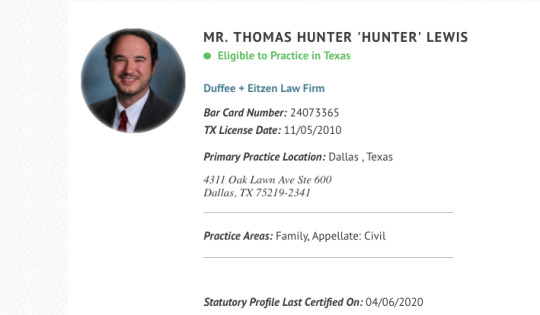#statutory declaration Windsor
Explore tagged Tumblr posts
Text
Walk-In Notary Public Windsor Ontario Now Available
Are you in search of an efficient notary public Windsor Ontario service that is not scheduled? Sealed & Legal Counsel is delighted to announce our latest non-admission notary public walk-in Windsor Ontario offering.
In the current world of speed efficient and convenient legal services can be the difference. If you require documents that are authenticated, affidavits that have been signed or certified copies inspected by a walk-in service, we will ensure that you get prompt assistance, without the typical scheduling delays.
As a reputable law firm located in Windsor Ontario, we recognize how important accessibility is, and we strive to assist clients who require immediate attention.In Sealed & Legal Counsel, our dedication to providing the highest quality legal Services goes beyond the traditional appointments.
This blog focuses on the advantages of our walk-in public notary service, including how you can get ready for the visit as well as other services that are complementary to ours, such as legal advice for families along with tax-related assistance, as well as general Legal Assistance in Windsor Ontario.
Find out how our firm stands out from the rest of Law Firms in Windsor Ontario and how our process is streamlined to benefit both clients and business.

Why Choose a Walk-In Notary Public in Windsor Ontario?
Convenience and Flexibility
A lot of clients require urgent notarizations for contracts or real estate documents and court papers. With an open notary public in Windsor Ontario, you can visit Sealed & Legal Counsel when you are able to do so. There is no need to wait to make an appointment.
This flexibility is crucial for professionals working under deadlines and deadlines for students needing fast signatures or families who need to finish important papers.
Speedy Document Authentication
Our team of experts is prepared to take on a range of notarization needs. From affidavits to statutory declarations to authentic copies that are certified We provide speedy and precise service.
With our walk-in service, Sealed & Legal Counsel can help you to avoid stress at the last minute. As the need for fast notary public Windsor Ontario services rises and our service is tailored to those who require quick notarization, without sacrificing the quality.
Accessibility for All Clients
If you're a newcomer or a regular customer Our walk-in services are open to all. People who require legal help in Windsor Ontario appreciate the accessibility policy. Businesses can benefit from speedy turnaround times in the case of corporate paperwork.
This enables us to demonstrate our commitment to being an legal firm located situated in Windsor Ontario to serve the community by providing prompt and accessible legal assistance.
The Sealed & Legal Counsel Approach
Experienced Professionals
Sealed & Legal Counsel is where you can find experienced lawyers and notaries, as well as experts in corporate law, family law issues, estate planning. While our walk-in clinic focuses on notarization services, clients may encounter additional legal issues when they visit. For those looking for the Best Family Lawyer in Windsor Ontario, our team is available to provide specific assistance. The ease of handling many issues in one place can be beneficial and helps build long-lasting relationships with our clients.
Seamless Integration with Other Services
Visitors who drop at the counter for notarization are able to find out about the following related services:
Family lawyer Windsor Ontario consultations on matters such as separation agreements.
Tax assistance from our in-house or our affiliated Tax Lawyer experts.
Support for businesses via Legal Services Windsor which includes contract reviews as well as Corporate documents.
By positioning notarization in a wider perspective of law, Sealed & Legal Counsel guarantees clients comprehensive advice that is tailored to the specific needs of each client.
Professional Environment
Our office located in Windsor offers a warm and welcoming environment with clear signs indicating the walk-in hours. The signage reads "Walk-In Notary Public Windsor Ontario Now Available," to ensure that you're aware of the exact location you need to go. Our reception staff is specially trained to assist visitors effectively, which means that we can reduce waiting time while maintaining privacy and professionalism.

Comprehensive Legal Assistance Beyond Notarization
Family Law and Domestic Services
When you visit for a quick notarization, you might be aware of the need for support from the family law. Sealed & Legal Counsel is acknowledged as the top family lawyer located in Windsor Ontario for handling divorce, child custody as well as cohabitation contracts.
If you need the signing of a separation agreement, or to create a cohabitation agreement Our family law specialists will be able to schedule a thorough consultation right on the on the spot. Through the combination of walk-in notarization with the knowledge of family law We offer a holistic solution for clients.
Corporate and Business Law
Local entrepreneurs and small businesses often need certified signatures for incorporation documents, shareholder agreements, or partnership contracts.
Our walk-in service caters to these urgent needs, and our lawyer in Windsor team offers further guidance on corporate compliance, intellectual property, and business succession planning. As a reputable law firm in Windsor Ontario, Sealed & Legal Counsel stands ready to support enterprises of all sizes.
Estate Planning and Wills
Ensuring your estate planning documents are properly notarized is critical. During your walk-in visit, ask about will drafting, power of attorney arrangements, and healthcare directives.
Our professionals assist in preparing and notarizing these documents, and you benefit from our expertise as a trusted Law Firm in the region. Proper notarization adds legal weight, ensuring your wishes are honored without delays.
Tax and Financial Legal Advice
Tax-related notarization can include affidavits for foreign income declarations or certified documentation for financial institutions. If you need a Tax Attorney or advice on cross-border tax implications, our team can coordinate an appointment.
Clients appreciate that Sealed & Legal Counsel offers both quick notarization and strategic tax planning, reflecting our commitment to comprehensive Legal Services Windsor.
Conclusion and Call to Action
Sealed and Legal Counsel's Walk-In Notary Public Windsor Ontario Now Available service is designed to meet the demands of our community for flexible, effective legal assistance.
When you require a prompt notarization of your documents, talk to an attorney for your family in Windsor Ontario, or look into tax and corporate advice our comprehensive approach guarantees that you get top-quality support all under one roof.
Don't let scheduling hurdles delay critical legal tasks. Visit us now for a fast notarization or call us to find out more about other services like business consultations, estate planning and remote notarization services.
As a top law firm located in Windsor Ontario, Sealed & Legal Counsel is committed to providing professional, accessible and cost-effective legal services. Take advantage of our service at a walk-in and enjoy your peace of mind with every one of your legal and notarization requirements.
#Notary Public Windsor Ontario#notary services Windsor#mobile notary Windsor Ontario#affidavit notarization Windsor#certified true copy Windsor#statutory declaration Windsor#Windsor notary public office#legal document notarization Windsor#travel consent letter notarization Windsor#power of attorney notarization Windsor#Commissioner of Oaths Windsor#Windsor Ontario document certification#remote notary Windsor#same day notary Windsor#apostille services Windsor Ontario#Windsor notarization for immigration#real estate notary Windsor#notarization near me Windsor#professional notary Windsor Ontario#walk-in notary Windsor
0 notes
Text
Issues in Texas after Obergefell v. Hodges
A lot has happened since 2013 in the realm of same sex marriage.
To catch you up to speed, the U.S. v. Windsor case came down on June 26, 2013, requiring the federal government to recognize same sex marriages that are conducted lawfully in the states where the parties reside.
See U.S. v. Windsor 133 S. Ct. 2675 (2013),
Though a step towards full legal recognition of same sex marriages, this decision specifically allowed states to continue to define who can be married.
Texas, in turn, continued to disallow same sex marriages.
Then, on June 26, 2015 (precisely two years after Windsor), our Supremes finally afforded equal protection and recognition to same sex marriages throughout the entire United States.
Specifically, the majority held "that the right to marry is a fundamental right inherent in the liberty of the person, and under the Due Process and Equal Protection Clauses of the Fourteenth Amendment couples of the same sex may not be deprived of that right and that liberty.
The Court now holds that same-sex couples may exercise the fundamental right to marry.
No longer may this liberty be denied to them."
Obergefell v. Hodges, 135 S. Ct. 2584, 2605 (2015).
So where does this leave Texas law?
The truth is we are still figuring it out.
In fact, our current Texas Family Code contains several statutes which contradict Obergefell.
We still have provisions in both the Texas Family Code and the Texas Constitution defining marriage as only between a man and a woman.
Further, the Texas Family Code still recognizes only an informal marriage between a man and woman and does not recognize other statutory relationships found in other states, such as domestic partnerships.
Also, the Texas Family Code still contains presumptions of paternity which arguably may or may not be afforded to same sex couples.
With all that being said, courts in Texas are already dealing with these issues.
Let’s start with the idea of informal marriage aka "common law" marriage.
The only requirements for common law marriage under our Texas Family Code are that the parties must agree to be married, reside together, and hold themselves out as married.
The question arises as to whether informal (or even formal) marriages can be recognized in Texas prior to the Obergefell ruling, and whether the ruling itself is retroactive.
Though cases have been filed concerning the issue of retroactivity, unfortunately, no appellate decision has yet addressed it in Texas.
So, for the time being, the answer depends on where the case is filed.

Interestingly, Judge Guy Herman in Travis County, Texas back dated a same sex common law marriage for purposes of a probate case.
See Interlocutory Judgment Declaring Heirs in Estate of Stella Marie Powell, Cause No. C-1-PB-14- 001695, October 5, 2015.

The deceased, Stella Marie Powell, and her partner, Sonemaly Phrasavath, had a longtime relationship with each other and Ms. Powell passed away prior to the Obergefell ruling.
When Ms. Powell passed away, Ms. Phrasavath filed a Motion for Summary Judgment on August 25, 2015 to be able to inherit as a spouse would inherit, based on their common law marriage.
Despite the Attorney General’s intervention, the Court found on October 5, 2015 that the two did in fact have a common law mar- riage.
See Interlocutory Judgment Declar- ing Heirs in Estate of Stella Marie Powell, Cause No. C-1-PB-14-001695, October 5, 2015.
As for issues concerning children, for children born after June 26, 2015, both same sex parents can put their names on the birth certificate.
Further, for those children born prior to June 26, 2015, whom only one parent’s name appears on the birth certificate, those need to be amended to prevent any confusion in the event of litigation (a possible custody battle) or even for inheritance purposes.
Fortunately, the Texas Department of State Health Services issued a memorandum opinion after Obergefell, on August 12, 2015, which has been adopted and controls how the State will comply with the Supreme Court decision.
Many issues concerning amending birth certificates and death certificates can be resolved through a simple form.
In terms of same sex couples gaining parenting rights, there is still ample litigation which must occur.
General standing will be a hot button issue, as many same sex couples who reared children prior to Obergefell will be able to gain standing solely based on possession.
However, if couples fight and separate, that standing may be at issue.
The case law is slowly but surely beginning to answer some of the questions that lawyers and same sex couples have as it relates to the application of the Obergefell case.
Additionally, our next legislative session will occur in 2017.
Hope- fully with some thoughtful legislative updates, we can continue to go towards infinity and beyond to expand and define the rights of same sex couples and their children.
1
This case is currently on appeal, with the State of Texas appealing the Probate Court’s findings
24073365


0 notes
Text
TIL the feds are already in the middle of debating the right to gay and interracial marriage.
H.R.8404, aka the Respect for Marriage Act, has been passed by the House (thus temporarily protecting these rights) and awaits a Senate hearing (as of Aug. 30th, 2022). Here's an official summary:
This bill provides statutory authority for same-sex and interracial marriages.
Specifically, the bill repeals and replaces provisions that define, for purposes of federal law, marriage as between a man and a woman and spouse as a person of the opposite sex with provisions that recognize any marriage that is valid under state law. (The Supreme Court held that the current provisions were unconstitutional in United States v. Windsor in 2013.)
The bill also repeals and replaces provisions that do not require states to recognize same-sex marriages from other states with provisions that prohibit the denial of full faith and credit or any right or claim relating to out-of-state marriages on the basis of sex, race, ethnicity, or national origin. (The Supreme Court held that state laws barring same-sex marriages were unconstitutional in Obergefell v. Hodges in 2015; the Court held that state laws barring interracial marriages were unconstitutional in Loving v. Virginia in 1967.) The bill allows the Department of Justice to bring a civil action and establishes a private right of action for violations.
So uh, yeah.
If this passes, then the right to marriage for ALL consenting parties will be codified, meaning it's declared a constitutional right and cannot be challenged.
If this doesn't pass... then expect the Republican/Conservative party to introduce a bill within the coming months revoking the right to marriage for these consenting parties. Since they've already shown and discussed in length how gay marriage is an abomination and that even interracial marriage should not have been a federal choice.
7 notes
·
View notes
Text
"The Queen’s courtiers banned “coloured immigrants or foreigners” from serving in clerical roles in the royal household until at least the late 1960s, according to newly discovered documents that will reignite the debate over the British royal family and race.
The documents also shed light on how Buckingham Palace negotiated controversial clauses – that remain in place to this day – exempting the Queen and her household from laws that prevent race and sex discrimination.
The papers were discovered at the National Archives as part of the Guardian’s ongoing investigation into the royal family’s use of an arcane parliamentary procedure, known as Queen’s consent, to secretly influence the content of British laws.
They reveal how in 1968, the Queen’s chief financial manager informed civil servants that “it was not, in fact, the practice to appoint coloured immigrants or foreigners” to clerical roles in the royal household, although they were permitted to work as domestic servants.
It is unclear when the practice ended. Buckingham Palace refused to answer questions about the ban and when it was revoked. It said its records showed people from ethnic minority backgrounds being employed in the 1990s. It added that before that decade, it did not keep records on the racial backgrounds of employees.
Exemptions from the law
In the 1960s government ministers sought to introduce laws that would make it illegal to refuse to employ an individual on the grounds of their race or ethnicity.
The Queen has remained personally exempted from those equality laws for more than four decades. The exemption has made it impossible for women or people from ethnic minorities working for her household to complain to the courts if they believe they have been discriminated against.
In a statement, Buckingham Palace did not dispute that the Queen had been exempted from the laws, adding that it had a separate process for hearing complaints related to discrimination. The palace did not respond when asked what this process consists of.
The exemption from the law was brought into force in the 1970s, when politicians implemented a series of racial and sexual equality laws to eradicate discrimination.
The official documents reveal how government officials in the 1970s coordinated with Elizabeth Windsor’s advisers on the wording of the laws.
The documents are likely to refocus attention on the royal family’s historical and current relationship with race.
Much of the family’s history is inextricably linked with the British empire, which subjugated people around the world. Some members of the royal family have also been criticised for their racist comments.
In March the Duchess of Sussex, the family’s first mixed-race member, said she had had suicidal thoughts during her time in the royal family, and alleged that a member of the family had expressed concern about her child’s skin colour.
The Duke and Duchess of Sussex after attending the Queen’s birthday parade in 2018. Photograph: Niklas Halle’n/AFP/Getty Images
The allegation compelled her brother-in-law, Prince William, to declare that the royal family was “very much not” racist.
Queen’s consent
Some of the documents uncovered by the Guardian relate to the use of Queen’s consent, an obscure parliamentary mechanism through which the monarch grants parliament permission to debate laws that affect her and her private interests.
Buckingham Palace says the process is a mere formality, despite compelling evidence that the Queen has repeatedly used the power to secretly lobby ministers to amend legislation she does not like.
The newly discovered documents reveal how the Queen’s consent procedure was used to secretly influence the formation of the draft race relations legislation.
In 1968, the then home secretary, James Callaghan, and civil servants at the Home Office appear to have believed that they should not request Queen’s consent for parliament to debate the race relations bill until her advisers were satisfied it could not be enforced against her in the courts.
At the time, Callaghan wanted to expand the UK’s racial discrimination laws, which only prohibited discrimination in public places, so that they also prevented racism in employment or services such as housing.
A key proposal of the bill was the Race Relations Board, which would act as an ombudsman for discrimination complaints and could bring court proceedings against individuals or companies that maintained racist practices.
‘Not the practice to appoint coloured immigrants’
In February 1968, a Home Office civil servant, TG Weiler, summarised the progress of discussions with Lord Tryon, the keeper of the privy purse, who was responsible for managing the Queen’s finances, and other courtiers.
Tryon, he wrote, had informed them Buckingham Palace was prepared to comply with the proposed law, but only if it enjoyed similar exemptions to those provided to the diplomatic service, which could reject job applicants who had been resident in the UK for less than five years.
According to Weiler, Tryon considered staff in the Queen’s household to fall into one of three types of roles: “(a) senior posts, which were not filled by advertising or by any overt system of appointment and which would presumably be accepted as outside the scope of the bill; (b) clerical and other office posts, to which it was not, in fact, the practice to appoint coloured immigrants or foreigners; and (c) ordinary domestic posts for which coloured applicants were freely considered, but which would in any event be covered by the proposed general exemption for domestic employment.”
“They were particularly concerned,” Weiler wrote, “that if the proposed legislation applied to the Queen’s household it would for the first time make it legally possible to criticise the household. Many people do so already, but this has to be accepted and is on a different footing from a statutory provision.”
By March, Buckingham Palace was satisfied with the proposed law. A Home Office official noted that the courtiers “agreed that the way was now open for the secretary of state to seek the Queen’s consent to place her interest at the disposal of parliament for the purpose of the bill.”
The phrasing of the documents is highly significant, because it suggests that Callaghan and the Home Office officials believed it might not be possible to obtain the Queen’s consent for parliament to debate the racial equality law unless the monarch was assured of her exemption.
As a result of this exemption, the Race Relations Board that was given the task of investigating racial discrimination would send any complaints from the Queen’s staff to the home secretary rather than the courts.
In the 1970s, the government brought in three laws to counter racial and sexual discrimination in the workplace. Complainants in general were empowered to take their cases directly to the courts.
But staff in the royal household were specifically prevented from doing so, although the wording of the ban was sufficiently vague that the public might not have realised the monarch’s staff had been exempted.
A civil servant noted that the exemption in the 1975 Sex Discrimination Act had been “acceptable to the palace, largely because it did not explicitly single out persons employed by Her Majesty in her personal capacity for special exception” while still removing them from its scope.
The exemption was extended to the present day when in 2010 the Equality Act replaced the 1976 Race Relations Act, the 1975 Sex Discrimination Act and the 1970 Equal Pay Act. For many years, critics have regularly pointed out that the royal household employed few black, Asian or minority-ethnic people.
In 1990 the journalist Andrew Morton reported in the Sunday Times that “a black face has never graced the executive echelons of royal service – the household and officials” and “even among clerical and domestic staff, there is only a handful of recruits from ethnic minorities”.
The following year, the royal researcher Philip Hall published a book, Royal Fortune, in which he cited a source close to the Queen confirming that there were no non-white courtiers in the palace’s most senior ranks.
In 1997 the Palace admitted to the Independent that it was not carrying out an officially recommended policy of monitoring staff numbers to ensure equal opportunities.
A Buckingham Palace spokesperson said: “The royal household and the sovereign comply with the provisions of the Equality Act, in principle and in practice. This is reflected in the diversity, inclusion and dignity at work policies, procedures and practices within the royal household.
“Any complaints that might be raised under the act follow a formal process that provides a means of hearing and remedying any complaint.” The palace did not respond when asked if the monarch was subject to this act in law."
3 notes
·
View notes
Link
Schoolhouse Rock, and the Constitution, teach that a bill becomes a law when the president signs it. Often the Supreme Court will explain that a given bill was signed by “the president.” But on rare occasions, the justices will refer to the president by name. Does this SCOTUS name-dropping matter? If the Court merely notes which president was in office when Congress passed a specific bill, there is no problem. That fact, in the legal lingo, is merely descriptive. However, if the Court identifies the president to make a broader point—for example, that the bill was passed by a liberal or a conservative—there may indeed be a problem. The Court should resist the urge to wade, or even dip a toe, into partisan squabbles by naming the politicians responsible for legislation, unless, of course, those facts are necessary to resolve a given a case.
Recently the Court’s newest member named two presidents in two very different contexts. In Rimini Street v. Oracle, a fairly routine case about court fees, Justice Brett Kavanaugh wrote the majority opinion for a unanimous court. He observed that in 1853, “President Fillmore signed a comprehensive federal statute establishing a federal schedule for the award of costs in federal court.” This reference to Fillmore was fine, providing a brief history lesson for anyone not too sure who was president back then. On the court of appeals, then-Judge Kavanaugh would routinely name the president who signed a bill into law.
In a second, high-profile case, Kavanaugh’s presidential name-dropping took a turn. Nielsen v. Preap considered several provisions of the Illegal Immigration Reform and Immigrant Responsibility Act of 1996 (IIRIRA), which imposed tighter restrictions on immigration. The Court held that IIRIRA did not require that certain aliens held in federal custody should be entitled to a bond hearing. Justice Samuel Alito wrote the majority opinion, which was joined by Chief Justice John Roberts and Justices Clarence Thomas, Neil Gorsuch, and Kavanaugh.
[Read: Brett Kavanaugh is patient zero]
The newest member of the Court wrote a brief concurrence. He offered several reasons the majority opinion was “narrow.” In the penultimate paragraph of his opinion, Kavanaugh wrote, “The issue before us is entirely statutory and requires our interpretation of the strict 1996 illegal-immigration law [IIRIRA] passed by Congress and signed by President Clinton.” President Bill Clinton signed the Republican-sponsored bill into law on September 30, 1996—shortly before he stood for reelection—as part of his first-term pivot to the center.
I have no doubt that Kavanaugh’s intent here was as innocuous as in Rimini. But the implication was very different: The Court was not being “strict” toward immigrants; a bipartisan Congress and Clinton were being “strict” toward immigrants. In other words, don’t blame us for interpreting the law in a tough fashion—even a Democrat was fine with it.
Clinton signed another contentious bill nine days earlier. On September 21, 1996, he approved the Defense of Marriage Act (DOMA), which limited the federal definition of marriage to one man and one woman. Nearly two decades later, the Supreme Court declared DOMA unconstitutional in United States v. Windsor. Justice Anthony Kennedy’s majority opinion found that the “principal purpose” behind those who had approved the law was “a bare desire to harm” gays and lesbians.
Roberts dissented in Windsor. He contended that there was “hardly enough” evidence to show that the “342 Representatives and 85 Senators who voted for it, and the President who signed it” were motivated by bigotry. Of course, Roberts’s specificity made it easy to figure out that Democrats and Republicans had overwhelmingly favored DOMA, and that a popular Democratic president had signed it into law.
[Garrett Epps: Requiem for the Supreme Court]
But Roberts was right to omit the president’s name. (In 2013, Clinton claimed that he had signed DOMA only to prevent a constitutional amendment banning same-sex marriage, though there is no evidence to support that revisionism.) And Roberts’s silence seems to be the majority rule. In more than 300 decisions in which the Supreme Court referred to the president who had signed a bill into law, about a dozen named him.
In a recent significant case, it was essential to name the president: Trump v. Hawaii. The travel-ban litigation turned almost entirely on the words and deeds of one person. Accordingly, Roberts’s majority opinion mentioned the president by name once, and only once: “Shortly after taking office, President Trump signed Executive Order No. 13769, Protecting the Nation From Foreign Terrorist Entry Into the United States.” The remainder of the majority opinion referred only to “the President.” Once again, Roberts struck the right tone. “We must consider not only the statements of a particular President,” he wrote, “but also the authority of the Presidency itself.” The case wasn’t personalized to Trump, even though the case was all about Trump.
Justice Sonia Sotomayor’s dissent struck a different tone. In her written opinion, she repeatedly referred to “President Trump” and the “Trump administration.” During her oral announcement, she even used the president’s given name to criticize the third iteration of the travel ban: “But this repackaging is window dressing and it does nothing to cleanse the presidential proclamation of the discriminatory animus that President Donald Trump repeatedly conveyed as a candidate, as President-elect, and as President.” Seated in the gallery, I was shocked that she added “Donald.” Indeed, every time she uttered the word Trump, her voice was filled with disdain.
The justices should be careful about naming politicians, especially when they name in order to make a point about the political process. Citing legislative history from members of Congress who supported or opposed a bill is completely justifiable; those statements were designed to inform the law’s meaning. But it is generally a mistake to focus on the identity of the person whose only contribution was to sign the bill into law. Although this error does not violate any ethics rule, it’s worth avoiding for the sake of keeping the Court as far away from politics as possible. Kavanaugh’s reference to Clinton was right on the borderline; Sotomayor’s reference to Donald Trump crossed it.
from The Atlantic https://ift.tt/2HzsZsF
0 notes